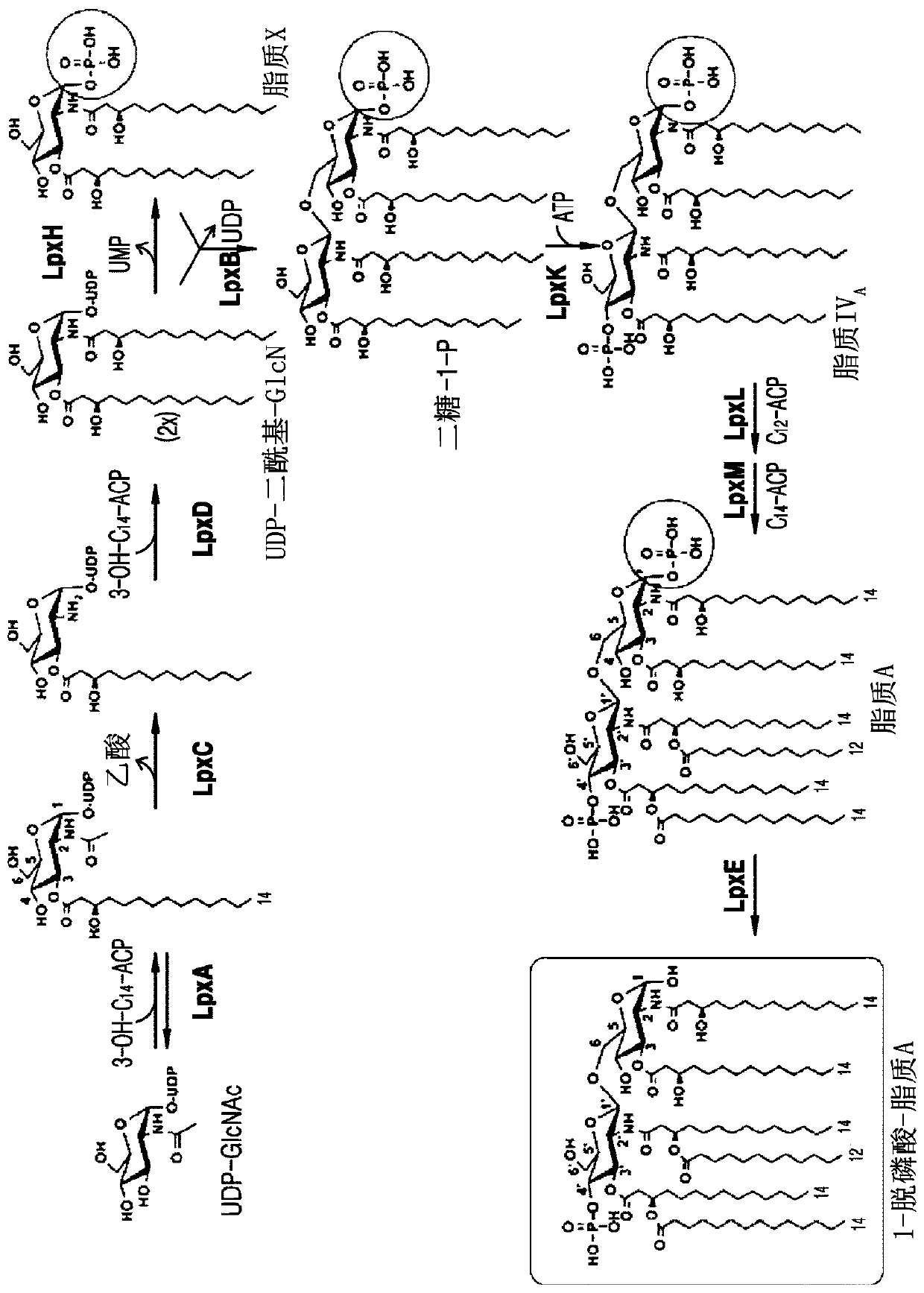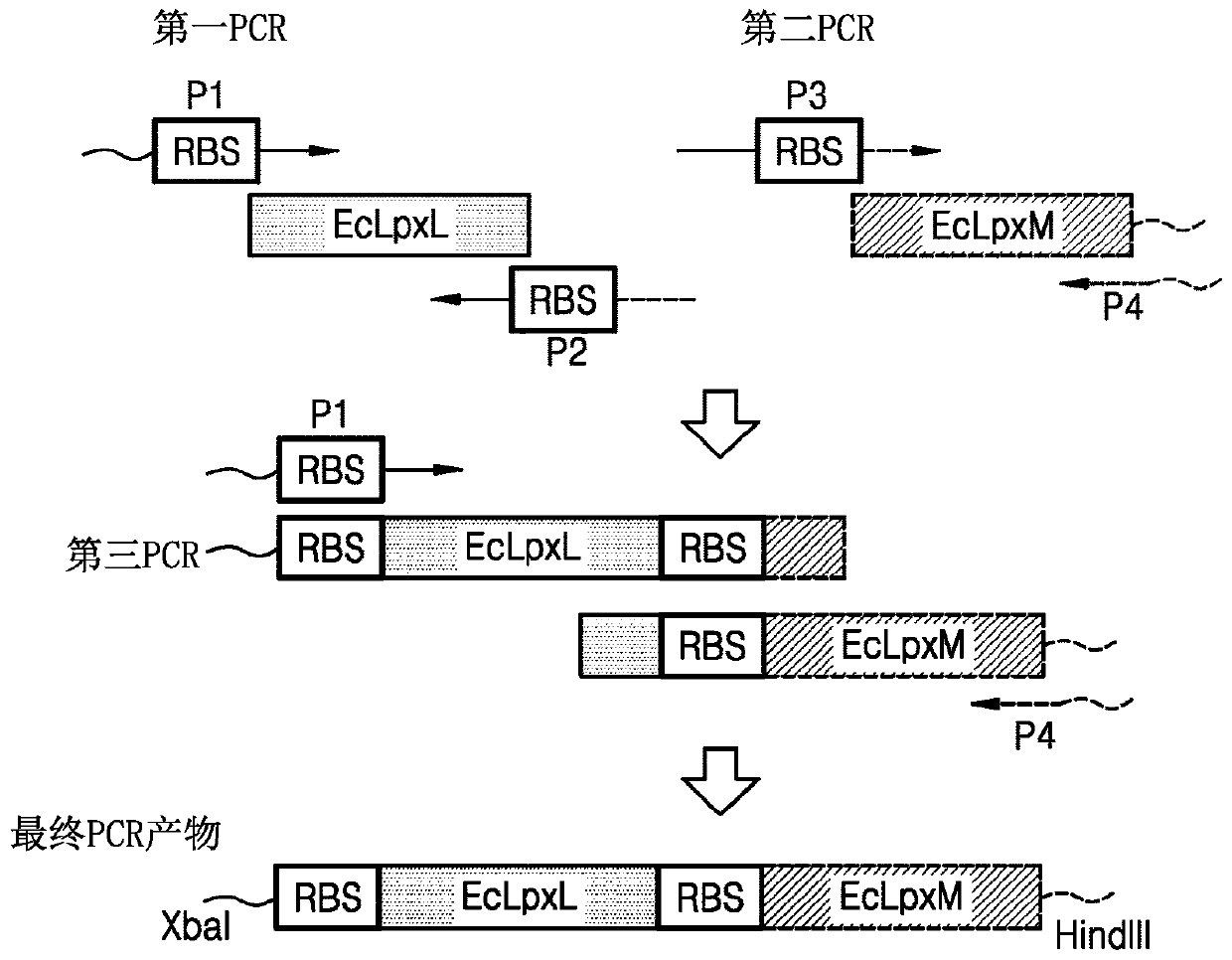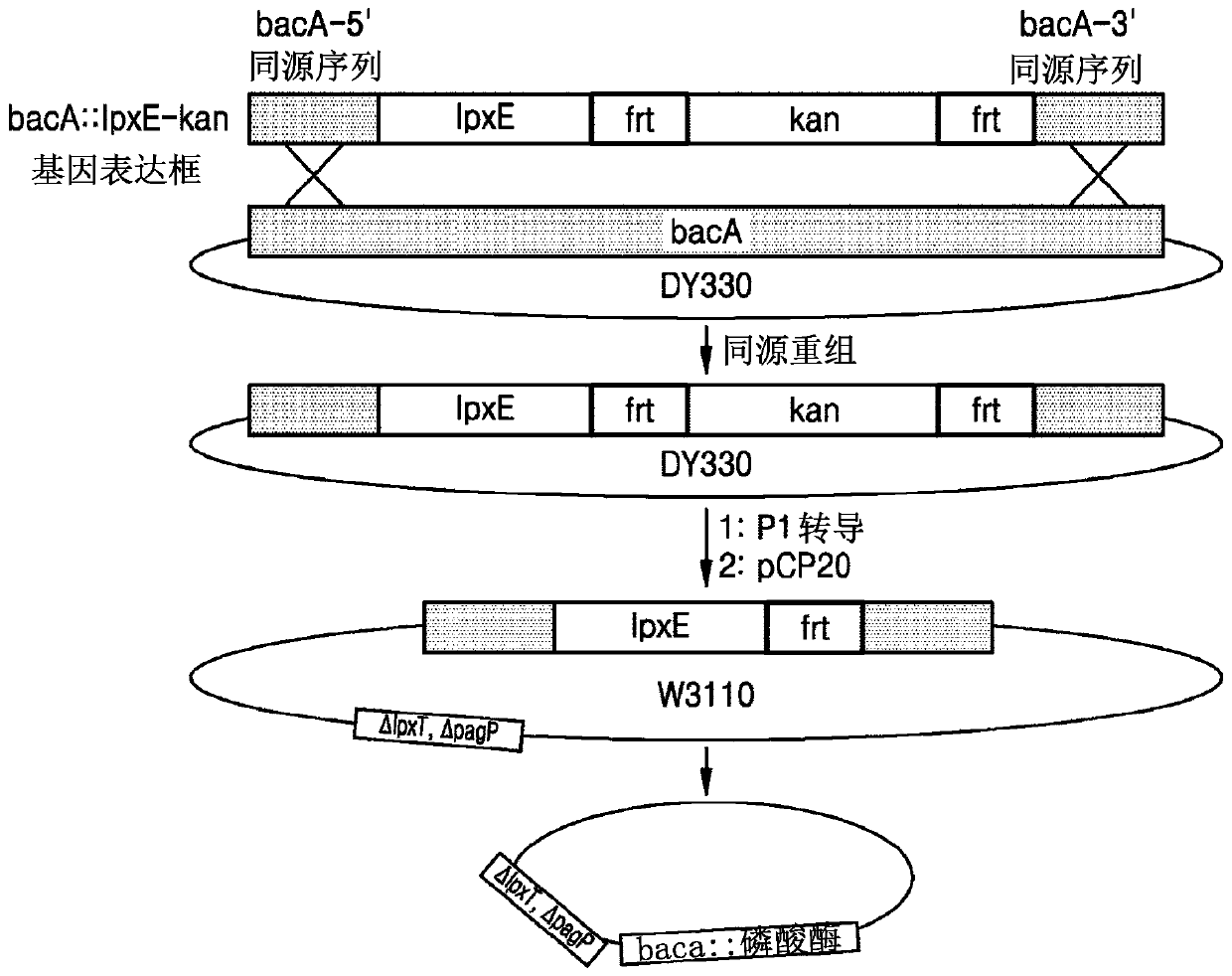Bacterium constitutively producing monophosphoryl lipid a and method of producing monophosphoryl lipid a by using bacterium
A monophosphoryl lipid and bacterial cell technology, applied in biochemical equipment and methods, recombinant DNA technology, acyltransferase, etc., can solve the problems of genetic engineering transformation efficiency and genetic engineering stability reduction
- Summary
- Abstract
- Description
- Claims
- Application Information
AI Technical Summary
Problems solved by technology
Method used
Image
Examples
example 1
[0063] Example 1, preparation of vectors comprising polynucleotides encoding Escherichia coli LpxL and Escherichia coli LpxM
[0064] 1.1. Preparation of pWSK29-EcLpxLEcLpxM
[0065]In order to obtain polynucleotides encoding E. coli LpxL polypeptides from the E. coli W3110 genome (GenBank accession number NC_000918.1, ATCC), the following pair of primers were used to amplify the polynucleotides encoding the LpxL polypeptide including ribosomes by the first polymerase chain reaction (PCR). Polynucleotide (GenBank Accession No. AP009048.1 (c1118159.1117239, SEQ ID NO: 2):
[0066] LpxL forward primer P1:
[0067] 5'-CGCAGTCTAGAAAGGAGATATATTGATGACGAATCTACCCAAGTTCTC-3' (SEQ ID NO: 3)
[0068] LpxL reverse primer P2:
[0069] 5'-CGCTATTATTTTTTTTCGTTTCCATTGGTATATCTCTTTCTTATTAATAGCGTGAAGGAACGCCTTC-3' (SEQ ID NO: 4)
[0070] In order to obtain the polynucleotide encoding the E. coli LpxM polypeptide from the E. coli W3110 genome, the polynucleotide encoding the EcLpxM polypeptide...
example 2
[0104] Example 2, the preparation of escherichia coli bacterial strain
[0105] 2.1. Preparation of Escherichia coli KHSC0044 (pWSK29-EcLpxLEcLpxM, △lpxT, △pagP, bacA::HpLpxE, kdtA::kan, W3110) strain
[0106] 2.1.1. Preparation of Escherichia coli with the lpxT gene removed from the genome
[0107] Escherichia coli lpxT::kan, W3110 strain was prepared, wherein the kanamycin gene expression cassette was inserted into the lpxT gene (SEQ ID NO: 19) of the Escherichia coli genome, wherein the lpxT gene coded LpxT polypeptide (SEQ ID NO: 18).
[0108] Then, the pCP20 plasmid (Kirill A.Datsenko and Barry L.Wanner PNAS (2000), Vol. 97, pp. 6640-6645) was transformed into E. coli lpxT::kan, W3110 strain, and the transformation was selected on LB plates Escherichia coli. The selected Escherichia coli was inoculated on an LB plate, and selected at a temperature of 42° C., thereby preparing an E. coli △lpxT, W3110 strain in which the lpxT and kanamycin gene expression cassettes were ...
example 3
[0156] Example 3. Determination of Lipid Composition of Escherichia coli Strains KHSC0044, KHSC31, KHSC0045 and KHSC0055
[0157] 3.1. Culture of KHSC0044, KHSC0031 and KHSC0045
[0158] E. coli strains KHSC0044, KHSC0031 and KHSC0045 were prepared as described above in Sections 2.1.6, 2.2.3 and 2.3.3, respectively.
[0159] A stock solution of each E. coli strain was inoculated on LB plates containing 50 μg / mL ampicillin (EMD Microwell) and 1 mM isopropyl β-D-1-thiogalactoside (IPTG) (UBP Bio), Then cultivate. Select KHSC0044 (8 colonies) strains, KHSC0031 (7 colonies) strains and KHSC0045 (7 colonies) strains, and then inoculate them into 3 mL of LB liquid medium containing 50 μg / mL ampicillin (EMD microwell) and 1 mM IPTG , and then incubated overnight at approximately 30°C. Inoculate each resulting culture broth into 200 mL of fresh LB liquid medium, dilute to an OD of about 0.06 to about 0.1 600 , and then cultured overnight at about 30° C., the fresh LB liquid medium...
PUM
 Login to View More
Login to View More Abstract
Description
Claims
Application Information
 Login to View More
Login to View More - R&D
- Intellectual Property
- Life Sciences
- Materials
- Tech Scout
- Unparalleled Data Quality
- Higher Quality Content
- 60% Fewer Hallucinations
Browse by: Latest US Patents, China's latest patents, Technical Efficacy Thesaurus, Application Domain, Technology Topic, Popular Technical Reports.
© 2025 PatSnap. All rights reserved.Legal|Privacy policy|Modern Slavery Act Transparency Statement|Sitemap|About US| Contact US: help@patsnap.com



